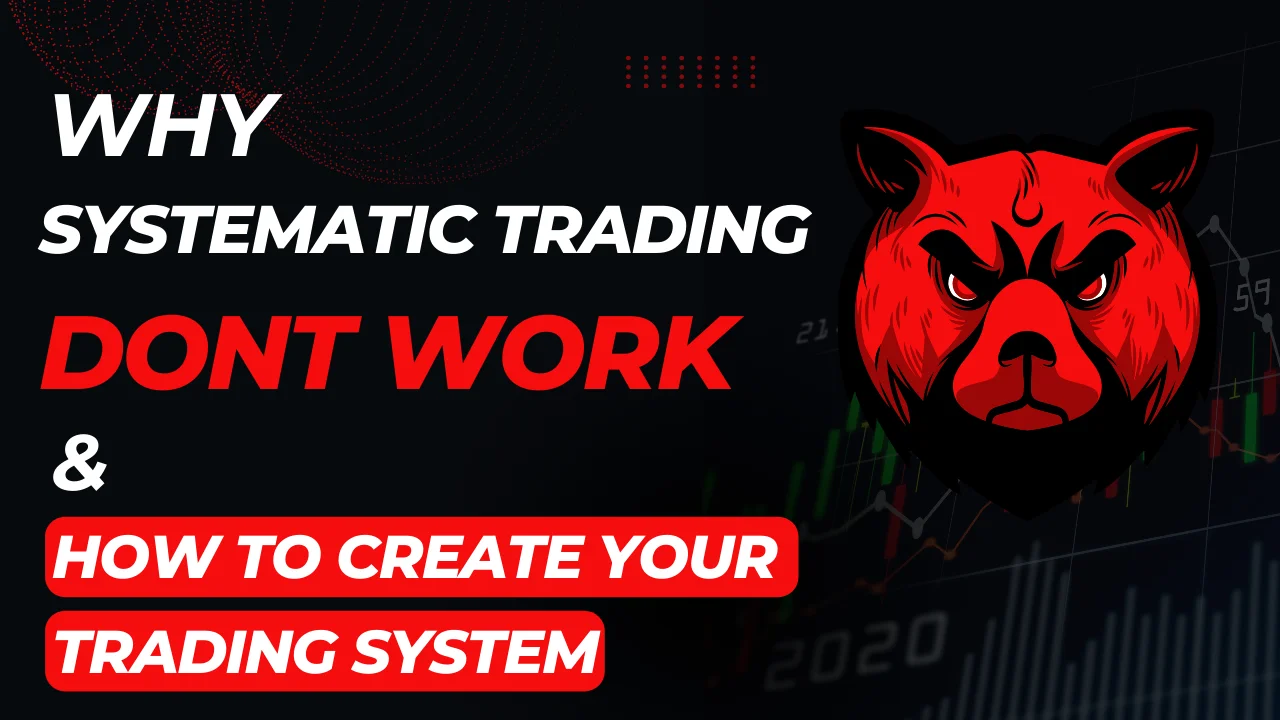
Why Systematic Trading don’t Work ? & How to create your Trading System
Why Systematic Trading don’t Work ?
A new car buyer is offered so many options that the possible modifications usually run into thousands! Why? Car dealers can do this because cars are modular – made up of individual spare parts which can be easily changed. When buying a new car we can choose among different engines, its features or add options like a fancy stereo. Later on we can still change certain parts like the tyres etc.
Now consider the large number of YouTubers, gers and websites describing various trading systems. Many are too imperfect to be considered systematic but others include quite detailed rules which can be coded. Nearly all of these publicly available trading systems are not modular, and can’t be easily adapted. Mostly, you don’t have the opportunity to ask the creator questions like:
“I have noticed you used a 20-day simple moving average here. When would it make sense to use a 30-day EMA moving average? You say we should put 5% of our capital into each trade. Why? What will happen if I put 20% or may be 50% in? I like your trading rules, but how would I use those in my own position sizing as I have a very limited capital? How can I use this to trade Nifty and Bank Nifty futures?”
However, I am going to help you create your own systematic trading strategies; this is more than just a recipe, it’s a guide to writing recipes from scratch. Inventing your own trading system requires extra work upfront, but it is more satisfying and profitable in the long run.
System Trading
Advancements in technology have made it easier than ever for individuals to engage in systematic trading. Access to historical price data, back-testing software, and a plethora of books and websites offering guidance make the transition to systematized investing more accessible. However, caution is advised, as not all systems are created equal, and misuse can lead to substantial financial losses.
The profitability and efficiency of systematic trading and investing, requiring less time and effort compared to traditional methods. Aimed at both traders and investors, the terms are used interchangeably, acknowledging the relevance of systematic approaches in various financial activities
How to create your Systematic Trading System
Creating a well-defined trading system removes emotional elements, facilitating a more consistent and objective strategy. While numerous trading systems are available, the focus is on developing a personalized system tailored to individual needs, avoiding the pitfalls associated with one-size-fits-all solutions
Running a systematic trading strategy is just like following any list of instructions (How to do material), such as a recipe. Many books on trading are like fast food outlets like McDonald’s, Vada Pav Stall or Pav Bhaji Stall, which gives you, something quick and convenient to eat from a limited menu.
To create your own recipes or Trading System requires an understanding of the science of food chemistry and of different kinds of dishes. Its divided in 4 Parts
Systematic Trading Part One :- Theory
It provides you a theoretical basis for why you should run systematic strategies how they are profitable how much returns you can expect what is drawdown etc, and gives an overview of the trading styles ( Directional or Non Directional ) that are available.
Systematic Trading Part Two :- Toolbox
Our main objective isn’t just to give you a single predefined system for trading, but to provide you with a modular framework which can be adapted to design strategies to meet your needs.
Tool Box you with a modular framework which can be adapted to design strategies to meet your needs.provides you with the key methods used in the creation of systematic
Strategies: Backtesting.
Like sharp kitchen knives these is a powerful tool, but it is also potentially dangerous. When misused large trading losses can be made (Like cutting your finger or hand while cutting vegetables) despite apparently promising ideas to make money effortlessly . I will show you how to use them properly – and when you do not need them to use.
Systematic Trading Part Three : Framework
Just like you can choose different engines and tyres on a car, my framework includes options for different trading rules and position sizing calculation
Just like cars can be modified This article will show you how to incorporate your own trading rules and change other parts of the framework. It will warn you of the dangers of being too aggressive, which will result in your bank account blowing up like an over-tuned engine
Framework provides a complete framework for the creation of systematic strategies Such as Drawdown, Expectancy, No of winning days, Risk to Reward Ratio, Consecutive number of winning days and losing days, Time taken to restore capital from drawdown, Maximum Profit in a day or week or Month, Maximum Loss in a day or week or Month. How much you lose on losing days and how much you earn on winning days.
Systematic Trading Finally in Part Four :- Practice
Sticking with the car analogy you can create a safe and durable family car for investing, an experimental kit car for Semi Automatic Trader, or a sporty two seater convertible of a trading system if you are a Fully Automated Systems Trader.
Then you have to do paper trading, check whether the strategies suits your personality, whether you can be emotionally free while trading it.
